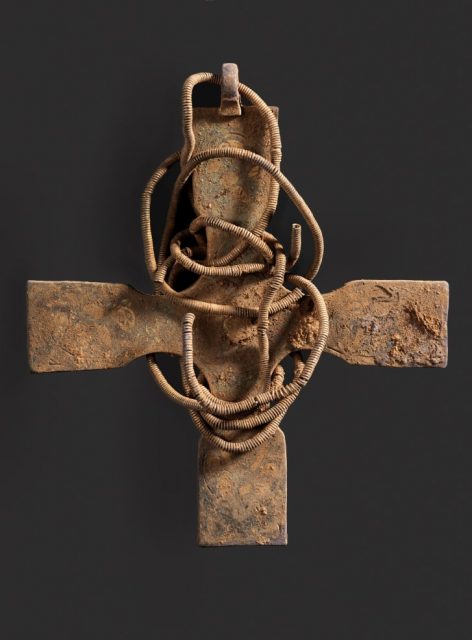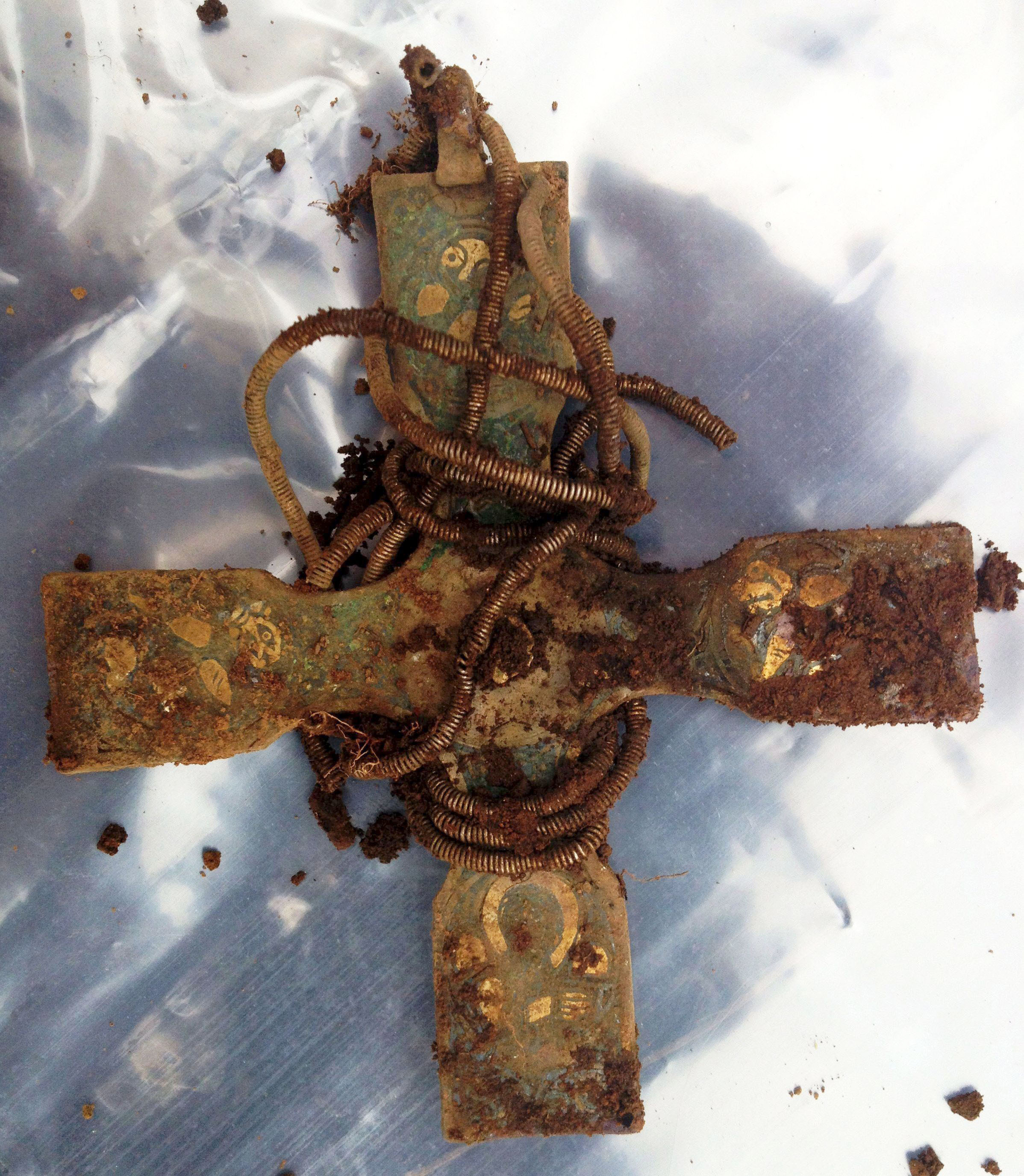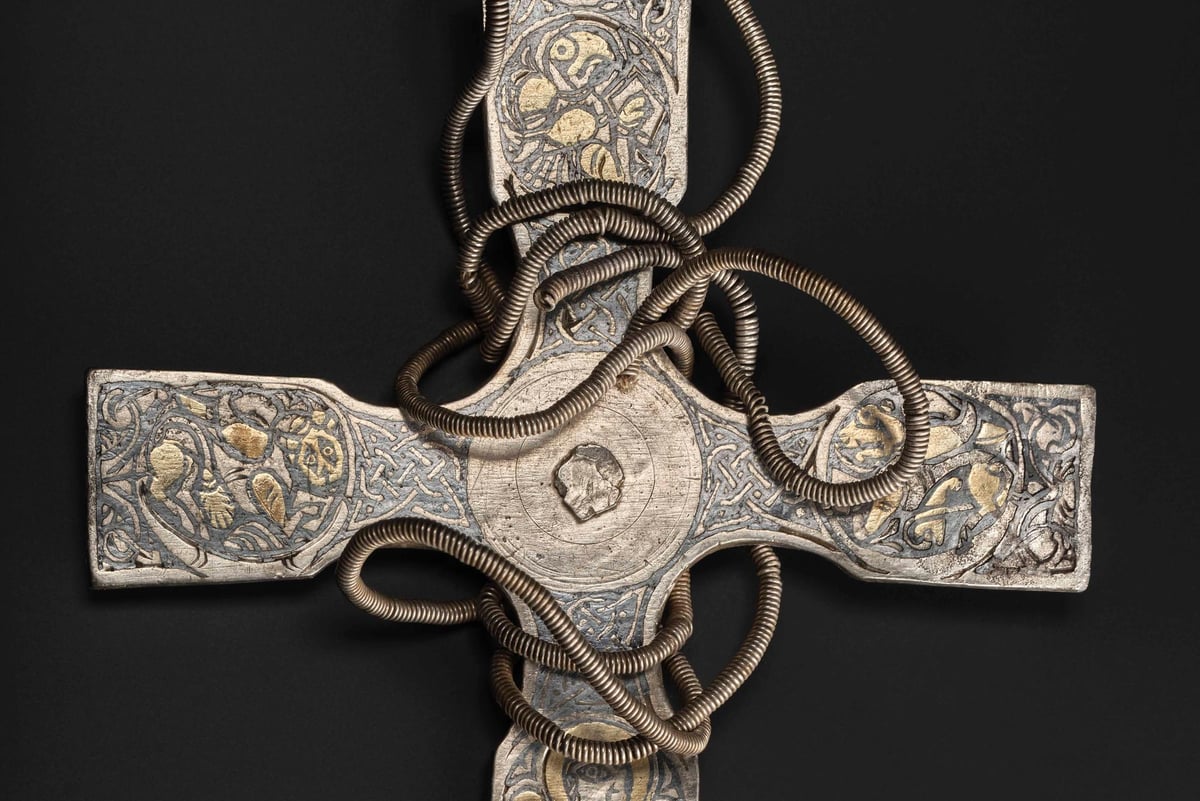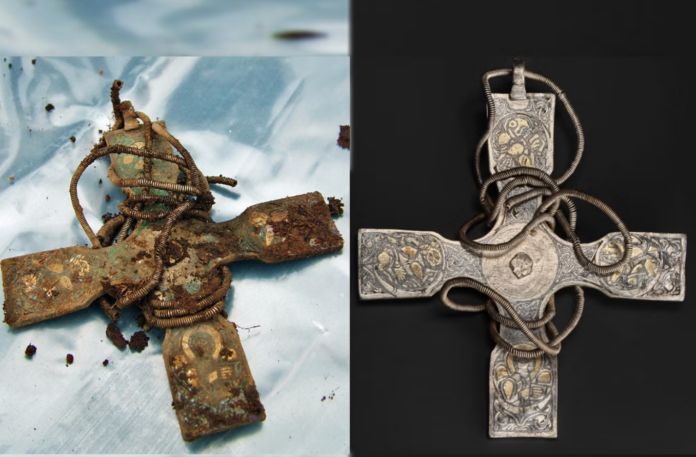A stunning revelation has emerged from beneath a millennium of dirt and grime. A remarkable Anglo-Saxon silver cross, unearthed in a Scottish field, has recently undergone meticulous conservation, unveiling its true splendor. This discovery, part of the Galloway Hoard, represents one of the most extraordinary finds from the Viking Age, suggesting the cross was commissioned by a person of significant status, potentially even a king.
A Hidden Treasure

When first discovered in 2014, the cross was far from impressive. Unearthed from a ploughed field in western Scotland as part of the Galloway Hoard—the richest collection of Viking-age artifacts ever found in Britain or Ireland—it appeared as little more than a tarnished relic. The National Museums Scotland (NMS) acquired this treasure in 2017, and initial glimpses of its gold-leaf decoration were only hints of the beauty hidden beneath its soiled surface.
The cross, an exemplary piece of Anglo-Saxon metalwork, has now been fully revealed. Created by a masterful goldsmith, it features an intricate design with symbols representing the four evangelists: Saint Matthew (man), Mark (lion), Luke (cow), and John (eagle). This detailed craftsmanship indicates that the cross was not only a high-quality artifact but also one of significant cultural and religious importance.
A Glimpse into the Past

Dr. Martin Goldberg, NMS’s principal curator of early medieval and Viking collections, expressed his awe at the cross’s restored condition. He noted its unparalleled quality, a rarity given the historical context. “It’s just spectacular. There really isn’t a parallel. The quality of the workmanship is just incredible. It’s a real privilege to see this after 1,000 years,” Goldberg remarked.
The Galloway Hoard, buried in the late 9th century in Dumfries and Galloway, was discovered by a metal detectorist and includes over 100 gold, silver, and other items, such as a gold bird-shaped pin and a silver-gilt vessel. The preservation of the textile in which these objects were wrapped is particularly notable, offering further insights into the period.
Historical Context and Significance

During the early 10th century, as new kingdoms emerged in response to Viking invasions, regions like Galloway experienced significant cultural and political changes. Galloway was once part of Anglo-Saxon Northumbria and later became the Lordship of Galloway, dominated by people of Scandinavian descent.
Goldberg explained that the cross’s late Anglo-Saxon style of decoration suggests it was commissioned by someone of high rank. “First sons were usually kings and lords; second sons would become high-ranking clerics. It’s likely to come from one of these aristocratic families,” he said. The cross’s intricate spiral chain, which would have been worn around the neck, adds a personal touch to its history.
Conservation Challenges
Conservators used a specially carved porcupine quill to delicately remove the dirt without damaging the precious metalwork. This careful process ensured the preservation of the cross’s intricate details and historical value. Dr. Leslie Webster, former keeper of Britain, Prehistory and Europe at the British Museum, praised the cross as a rare and invaluable example of high-status Anglo-Saxon ecclesiastical metalwork. Its preservation is especially noteworthy considering the widespread losses of such artifacts during Viking raids, highlighting its significance as a unique survivor from this tumultuous period.
Conclusion
The Galloway Hoard’s Anglo-Saxon cross offers a profound glimpse into a bygone era of grandeur and artistic excellence. Although the reason for its burial remains a mystery, the cross continues to provoke questions and inspire research. For those interested in exploring this magnificent artifact further, the exhibition “Galloway Hoard: Viking-age Treasure” will be on display at the National Museum of Scotland in Edinburgh from February 19 to May 9, before touring to Kirkcudbright, Dundee, and Aberdeen.
The restoration of this 1,000-year-old cross not only celebrates the skill and artistry of its creator but also sheds light on the historical and cultural dynamics of the Viking Age, reaffirming its place as a treasured artifact of unparalleled significance.
